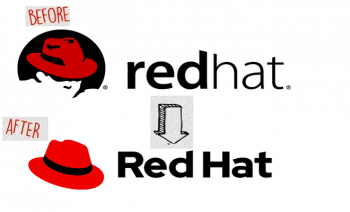Red Hat Enterprise Linux is expected to contribute to more than $10 trillion worth of global business revenues in 2019, according to a Red Hat-sponsored IDC study.

With the completion of the $34 billion Red Hat IBM deal just around the corner, the companies have high hopes and expectations for the future as they get ready to go after the hybrid cloud market.
While the acquisition of Red Hat would give IBM a strong position in the hybrid-cloud market, the open-source software company is hopeful that investments by the IT services giant would help accelerate its mission.
Red Hat upgraded its mission in 2009 with a new statement: “To be the catalyst in communities of customers, contributors and partners creating better technology the open source way.”
“@IBM is one of our oldest partners. They saw the value in opensource early and invested in it often. Their investments yesterday, today and tomorrow allow RedHat to accelerate our mission” – Red Hat tweeted on Saturday.
The US Department of Justice has essentially approved the IBM’s proposed $34 billion Red Hat acquisition, which is anticipated to close in the second half of 2019. However, the deal still needs to get approval from several other regulatory bodies, including the regional regulators in Europe and China.
Once the deal is closed, Red Hat will join IBM’s Hybrid Cloud team as a distinct unit, and will maintain its current management team and headquarters, facilities, brands and practices.
Ending weeks of speculation, IBM CEO Ginni Rometty has also made it clear that IBM will let RedHat work independently. “RedHat will stay independent. I want them to be successful,” she said while interacting with RedHat CEO Jim Whitehurst at the RedHat Summit.
Red Hat acquisition to help IBM become a leader in the hybrid cloud market
A Red Hat-sponsored IDC study has estimated that Red Hat Enterprise Linux is poised to contribute to more than $10 trillion worth of global business revenues in 2019.
This means the $34 billion purchase of Red Hat is likely to put IBM on a growth track. Looking at its latest annual revenues, the company is still going nowhere fast.
In February this year, IBM declared its annual revenues of $79.59 billion for fiscal 2018, which is not significantly different from the $79.14bn it made in 2017 and $79.92bn in 2016.
On the other hand, Red Hat reported double-digit growth at the end of fiscal 2019. Its revenue surpassed $3.4 billion for the full year, with $2.9 billion of that coming from subscriptions. Both total revenue and subscription revenue were up 15 percent from the previous year.
Red Hat generated about $1 billion of free cash flow in fiscal 2019, and the number is estimated to move substantially higher in the coming years when it combines its business with IBM.
Meanwhile, IBM is hoping that things will change when it takes over Red Hat.
IBM’s largest acquisition ever and the largest deal in the history of open source
In October 2018, IBM and Red Hat announced that they have reached a definitive agreement under which IBM will acquire all of the issued and outstanding common shares of Red Hat for $190.00 per share in cash, representing a total enterprise value of approximately $34 billion.
This acquisition will bring together the best-in-class hybrid cloud providers and enable companies to securely move all business applications to the cloud, they said.
Announcing the proposed acquisition, IBM’s Ginni Rometty had said, “The acquisition of Red Hat is a game-changer. It changes everything about the cloud market. IBM will become the world’s #1 hybrid cloud provider, offering companies the only open cloud solution that will unlock the full value of the cloud for their businesses.”
The acquisition of Red Hat is expected to accelerate IBM’s revenue growth, gross margin and free cash flow within 12 months of closing. It also will support a solid and growing dividend.

Red Hat debuts new logo ahead of IBM acquisition
Red Hat dropped its legendary “Shadowman” logo after nearly 20 years and debuted a new logo earlier this month.
In a blog post, Tim Yeaton, Red Hat’s executive vice president of corporate marketing, said they decided to change its “Shadowman” logo as many people considered it to be “sinister, secretive, evil or sneaky.”
“The new logo reflects Red Hat’s evolution from a scrappy upstart ‘sneaking’ into data centers with boxed copies of a Linux-based operating system, to the world’s leading provider of open-source solutions for enterprise hybrid cloud environments,” Yeaton said.
With the new logo, “we’ve truly stepped out of the shadows,” he added.
Jim Whitehurst, president and CEO of Red Hat, also tweeted, “Our new logo represents how @RedHat has evolved from a one-product company to the enterprise open source leader with a full portfolio stack.”












































































